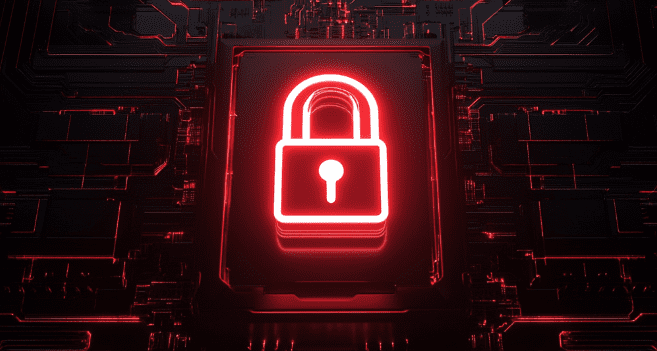The True Cost of Downtime and How to Avoid It
Downtime isn’t just a technical hiccup. For most businesses, it’s a silent drain on revenue, productivity, and reputation. A single system failure can create immediate financial losses, but the damage doesn’t stop when the server comes back online. The ripple effects of downtime; frustrated employees, missed opportunities, and disappointed customers, can quietly erode the foundations of your business.
Table Of Contents:
- Seeing the Real Cost of Downtime
- Bad IT as the Root Cause
- Why Good IT Is a Smart Investment
- How Hyperion Keeps Downtime at Bay
- Avoiding the Downtime Trap
- The Bottom Line
- FAQs
At Hyperion Networks, we don’t simply provide dashboards or occasional reports. We take an active role in keeping your systems healthy, monitoring them 24/7, and acting before problems have a chance to bring operations to a halt. We believe IT and managed services aren’t just a cost to bear, they’re an investment in the long-term stability and profitability of your company, much like your legal team or your marketing department.

Seeing the Real Cost of Downtime
The obvious expense of downtime is lost revenue. If your systems are offline, you can’t process orders, send invoices, or close sales. But that’s only the beginning. The less visible costs often do far more damage.
When systems fail, your employees are left waiting. Their salaries and benefits continue to accrue, but without functioning tools, their output drops to zero. In a single hour of outage, dozens or even hundreds of employees can be idle, creating a payroll drain that adds up quickly.
Meanwhile, your customers are left stranded. They may be unable to reach you, unable to place orders, or unable to receive services they’ve paid for. Every moment of frustration chips away at the trust you’ve built, making them more likely to turn to competitors. Even after the system is restored, the memory of that poor experience lingers.
And then there’s the emergency response. Calling in IT support after a crash is always more expensive than preventing the crash in the first place. Add overtime for staff working late to catch up, rush shipping on replacement parts, and potential hardware upgrades, and a brief outage can balloon into a five-figure problem.

For many companies, the total cost of downtime is three to five times higher than what they initially estimate. Those unseen costs; lost productivity, reduced morale, diminished brand trust, don’t appear on your monthly IT invoice, but they’re every bit as real.
Bad IT as the Root Cause
Downtime rarely happens in isolation. It’s almost always the symptom of deeper issues; neglected maintenance, outdated infrastructure, or reactive rather than proactive IT management. Businesses that take a “fix it when it breaks” approach are playing a dangerous game, because the cost of reacting to problems is vastly higher than the cost of preventing them.
Bad IT isn’t just about failing systems; it’s about failing processes. If your staff can’t get quotes out the door, respond to customer inquiries, or even communicate effectively because tools aren’t working, you’re not just losing time, you’re losing revenue and damaging relationships.
Why Good IT Is a Smart Investment
Treating IT as an investment rather than a cost changes everything. Just as you wouldn’t hesitate to hire a lawyer to protect your business from legal risk, or invest in marketing to grow revenue, you should invest in IT to safeguard your ability to operate at all.

Good IT delivers predictable costs, consistent performance, and peace of mind. It ensures that employees can work efficiently, customers can access your services without interruption, and leadership can plan with confidence. Proactive maintenance prevents small issues from becoming crises, and round-the-clock monitoring means threats are addressed before they affect your operations.
When companies take this approach, the numbers speak for themselves: reduced downtime by 30–45%, smoother workflows, and greater customer satisfaction. In many cases, the investment in proactive IT services pays for itself many times over through avoided losses alone.
How Hyperion Keeps Downtime at Bay
Hyperion Networks is built on the belief that the best way to handle downtime is to prevent it. Our process begins with continuous monitoring, watching every critical system for signs of trouble. We look for patterns in performance data, identify potential bottlenecks, and address weaknesses before they cause interruptions.
We design networks with redundancy built in. That means backup internet connections, secondary power supplies, and duplicate hardware components ready to take over in the event of failure. This layered approach ensures that even if one part of your infrastructure fails, your business keeps running.
Regular maintenance is a core part of our strategy. We schedule system updates, apply security patches, and inspect hardware on a consistent basis. This proactive care reduces the risk of unexpected outages by more than seventy percent.

We also prepare your people. Staff training ensures that small technical issues can be resolved on the spot, without waiting for a support ticket to be processed. When an issue does need escalation, your team knows the proper procedures to ensure a rapid response.
And because no system is completely immune to downtime, we develop and regularly test disaster recovery plans. This preparation allows our clients to restore operations four to five times faster than companies without such plans, minimizing the impact of even the rare outages that do occur.
Avoiding the Downtime Trap
The danger for many businesses is that they don’t calculate the cost of downtime until they’ve suffered through it. By then, the damage is already done, lost customers, wasted payroll, and repair bills that could have been avoided. The smart approach is to recognize downtime as a major business risk and address it proactively.
With the right IT partner, your business can move from reactive firefighting to proactive prevention. That shift not only saves money, it also frees your team to focus on growth, innovation, and customer service instead of scrambling to recover from preventable disruptions.
The Bottom Line
Downtime is expensive. The cost isn’t just in the minutes or hours you’re offline, it’s in the frustrated employees, the lost customers, the delayed revenue, and the long-term hit to your reputation. Bad IT magnifies those risks, while good IT eliminates most of them before they start.

At Hyperion Networks, we make it our mission to keep your systems running smoothly so you can focus on running your business. We believe that prevention is priceless, and we prove it every day for our clients. Your customers expect reliability. Your employees need tools that work. And your profits depend on both.
FAQs
What is the average cost of downtime for a company?
The cost of downtime varies widely depending on the size and industry of the company. For small businesses, it can be thousands of dollars per hour, while for large enterprises, it can reach hundreds of thousands of dollars hourly. The true cost often includes not just immediate revenue loss, but also productivity drain, recovery expenses, and potential long-term reputation damage.
How can businesses accurately measure the impact of system downtime?
Businesses can measure downtime impact by implementing automated monitoring tools that track system availability in real-time, documenting each incident’s cause and duration, and analyzing performance metrics. Using a system downtime calculator with predetermined values for labor, lost revenue, and recovery expenses can provide concrete financial figures, making the true impact immediately visible to decision-makers.
What are some effective strategies to prevent system downtime?
Effective strategies to prevent downtime include building redundancy into critical systems, implementing regular preventive maintenance schedules, providing comprehensive staff training, using proactive monitoring tools, and developing a well-tested disaster recovery plan. These measures can significantly reduce the frequency and impact of unexpected outages.
How does downtime affect customer trust and long-term revenue?
Downtime can erode customer trust with each service interruption, potentially leading to long-term revenue decline. When customers encounter non-functional services, especially after seeing advertisements, it can negatively impact their perception of the brand. This loss of trust can result in decreased customer loyalty and reduced future business opportunities.
Why is it important to have a disaster recovery plan?
A disaster recovery plan is crucial because even with the best prevention strategies, some downtime is inevitable. Organizations with well-practiced recovery procedures typically resume operations 4-5 times faster than those without such planning. A comprehensive recovery strategy tailored to your specific business needs can significantly minimize the impact of unexpected system failures.
Hyperion Networks – Eliminate Downtime Before It Hurts Your Business
→ Prevent costly outages with proactive IT and infrastructure management
→ Real-time monitoring and rapid issue resolution to maximize uptime
→ Resilient systems, backup solutions, and team training to keep operations running
⭐⭐⭐⭐⭐ Rated 5/5 by Satisfied Clients

Joe Ray is a seasoned technology executive with a proven track record of leadership and innovation in the IT and telecommunications industry. As the President and CEO of Hyperion Networks, Joe has been instrumental in guiding the company’s growth and helping businesses leverage advanced technology solutions to meet their evolving needs. With over a decade of experience spanning roles such as Network Engineer, Network Technician, and Network Administrator at companies like Sharp Business Systems, Knox County Schools, and SHIELDS Electronics Supply, Joe’s diverse background brings a wealth of technical and managerial expertise to the table.
Related articles:

